
The little goats run toward me as fast as their hooves allow, crashing into each other as they try to reach me first, as though I were an old friend they haven’t seen in a long time. No one has ever received me with so much enthusiasm.
I am at Rancho Avellanas, a farm on the road to Santa Cruz’s Avellana beach. Carlos Carranza is the owner and he guides me around the farm, explaining the milking process. I’ve been here for two minutes playing with the goats and I can imagine myself looking after them forever. Carlos snaps me out of my daydream and tells me how the project began.
He and his wife Hilda Torre bought the 45-acre farm three decades ago and have been operating it as a dairy farm. Eight years ago they returned and made a few modifications, turning it into their home. They bought a few goats and started a new phase in their lives among trees and goat pens.
Carlos is a carefree, 65-year-old farmer who wears flip-flops and a grey shirt with the image of a purple goat. “Talking to my daughter-in-law and my kids who are really into health food, I started to see goats milk and its characteristics as very different from cow milk. It’s more similar to breast milk,” he said.
It wasn’t just the nutritious aspects that convinced him, but also the personalities of the animals and their historic relationship with human beings.
“You see them in the Bible, in mythology and even in Hinduism and that caught my attention,” Carlos said.
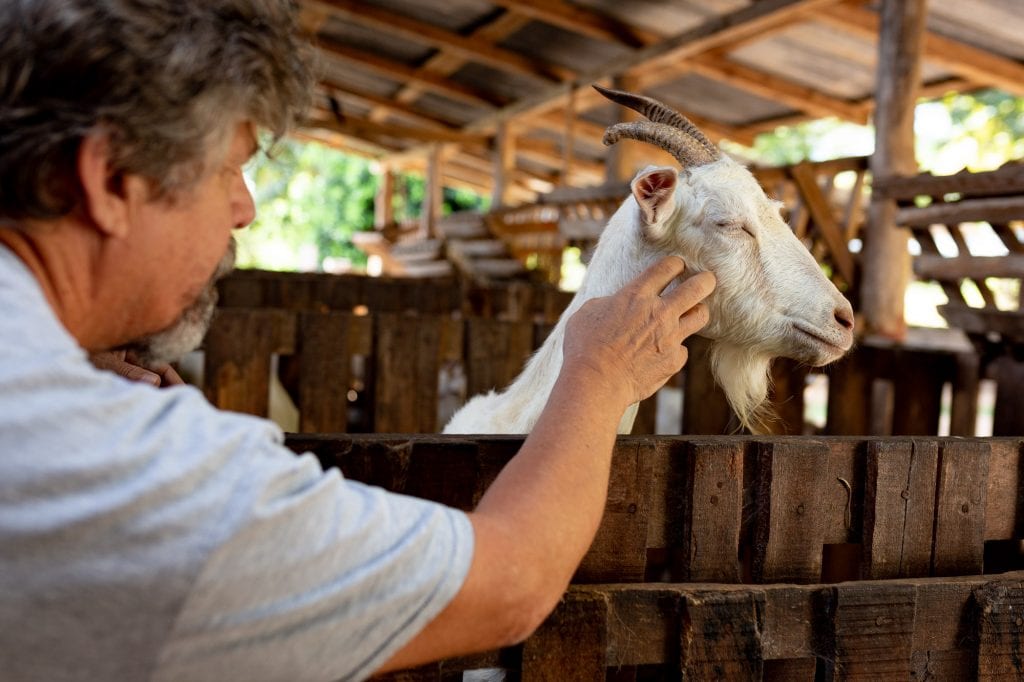
“In human history, the goat has always been with us, since we were nomads, and that caught my attention,” says Carlos Carranza, owner of Rancho Avellanas.Photo: César Arroyo
Here they produce more than 21 gallons of milk per day and make different types of products with it, like Brie cheese and greek yogurt for sale. A while ago they started to receive tourists and students who wanted to take a tour of the farm and see how it works.
They got the idea after several parents visited the farm and asked if they could bring their kids to see the goats. One day, a professor proposed bringing a group of students. Since then, school groups have been the most frequent visitors.
“It was a nice experience,” Carlos said. “It was a group of kids who I could explain from my perspective what a farm is and the importance of what we do, and tell them that food doesn’t come from the market. It comes from here.
That first tour is the same one they gave me today.
After talking for a while we left Carlos and Hilda’s house, which they built with wood from trees around the farm.
I walked with him along a path to see the first step in milk production in an area with plants they use to feed the goats. There, he explained that producing his own food ensures a better diet for the goats, which translates into higher quality milk.
“The goats are the most important thing here and we treat them really well. We spoil them,” he says while a goat watches us with that perpetual smile that characterizes them.
Then we go to a trail that weaves through a secondary forest until we reach a small creek. This stop was strategically planned so he could speak about the importance of conservation and show the fruit-filled trees he planted for monkeys, birds and squirrels.
After the quick ecology class, we headed back to the pen with purple signs and white letters that say “Goats.” From a distance, we could see them jump on the fence boards to stick their small heads through the cloud. I was received by pure tenderness.
The farm foreman, a small Honduran with an easy smile named Eber, comes up to us with buckets full of milk the goats slurped down in seconds.
They give groups of kids pacifiers so they can feed the baby goats and then take them to another pen to see how to milk them by hand.
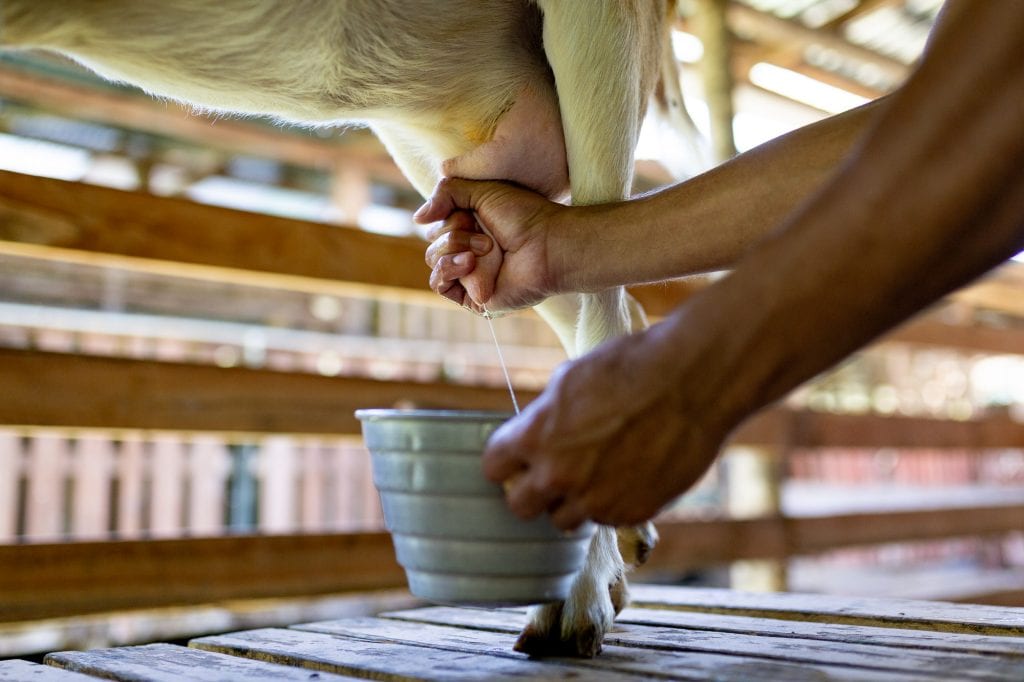
During the tour, tourists learn how to milk goats by hand. Those who want to can try.Photo: César Arroyo
The final part of the tour is a tasting of yogurt with fruits and fresh cheese with crackers. Carlos believes that when the kids understand where their food comes from, they take a revealing experience away with them.
This has been transformative for him as well. “I may not have had a lot of patience for kids, but now I have five grandchildren and they have totally changed me. The kids that come from schools see me almost as their grandpa taking them around and showing them things,” he says.
On the way back to Carlos’s house, he gives me a sample of one of the new cheeses he is producing, a spoonful of cream cheese with a soft flavor that melts in your mouth. Recently, Rancho Avellanas started to produce aged cheese, not just to broaden their portfolio of products, but also in an effort to attract the adult population. They want to show them how a farm in Costa Rica works and at the end of the tour they have tastings of aged cheese with a glass of wine.
“These types of experiences, I think, is something human beings are looking for,” Carranza says.
Let’s go to the farm!
Price: $20 per person. Minimum: 10. Maxim: 20.
(There is a different price for schools)
Duration: 2 hours.
Phone number: (+506) 8855 0175


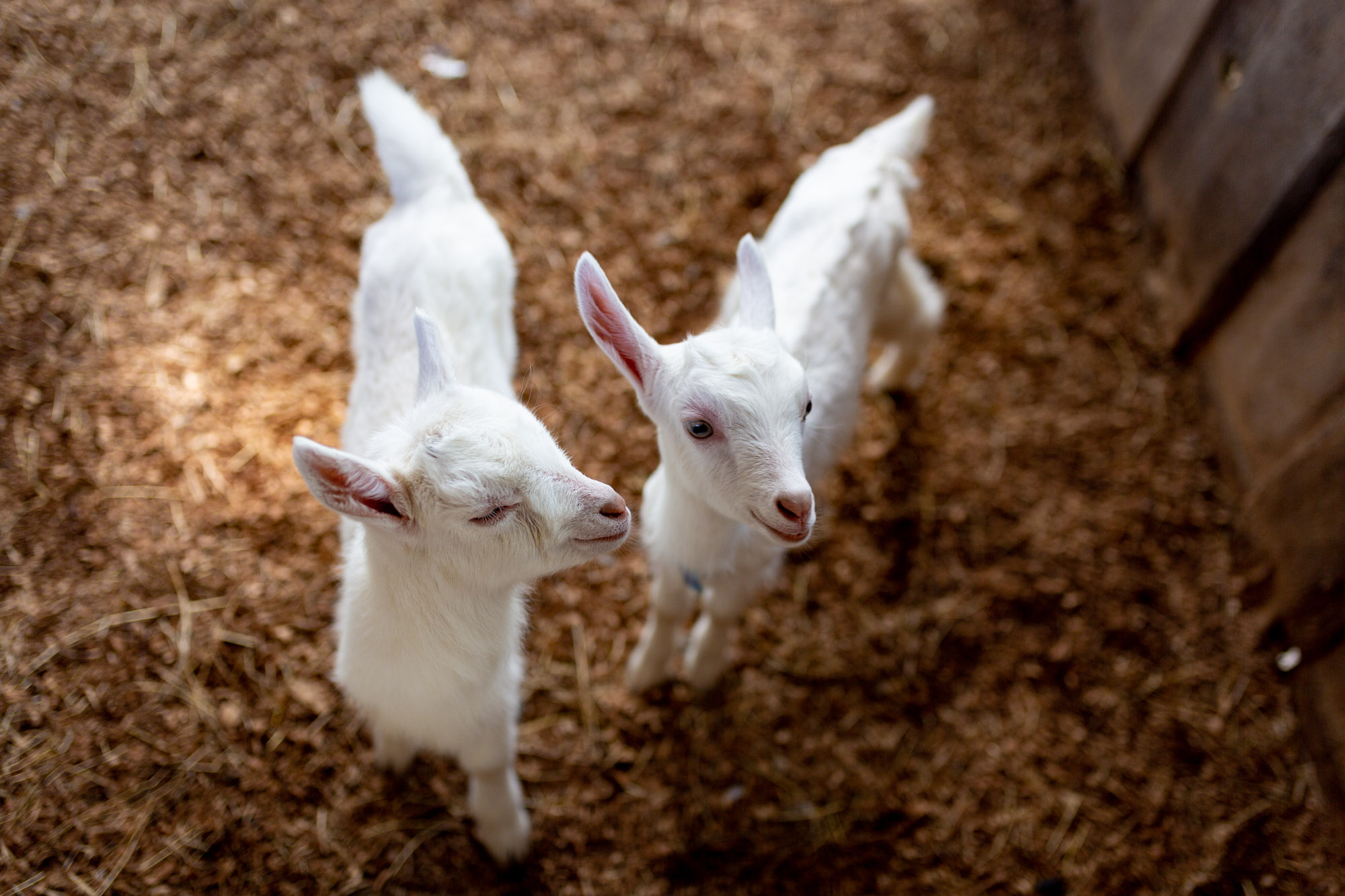

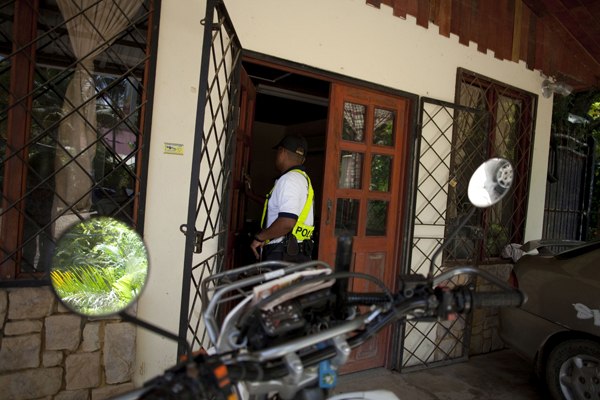
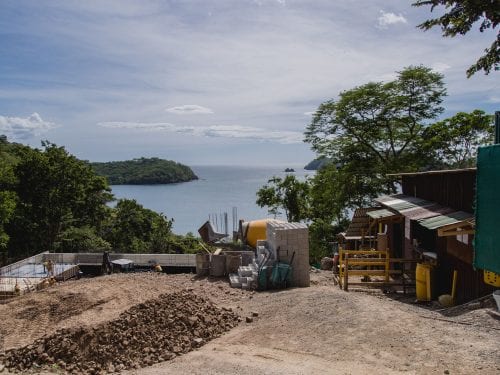

Comments